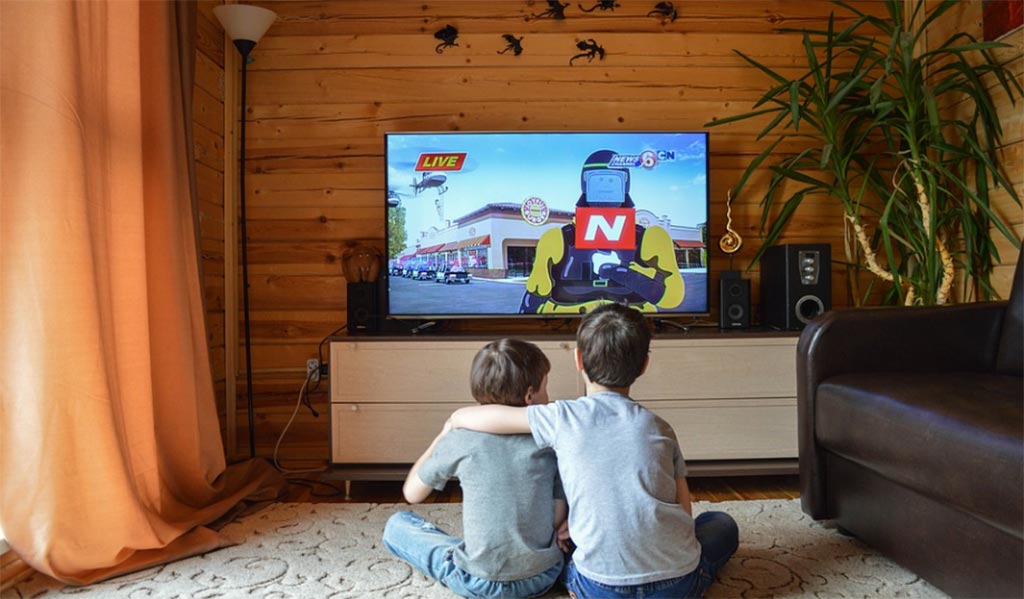Between the computer, the TV, the DS, and the Wii, a lot of screens are vying for your kids' attention. Parents try lots of different things to limit screen time -- everything from outright bans to "only on weekends" to setting a timer. Being The Enforcer of Screen Time Limits may solve your "right now" goal of getting kids to turn off. But raising kids with an understanding of healthy screen limits and the ability to self-regulate takes a little more work.
Like everything in parenting, media management is a process -- one that requires balancing your long-range goals with the daily reality of the various devices in your kids' lives. Here's an age-by-age media-management plan with some practical tips to try along the way.
Preschool age. Creating consistent, healthy media habits starting when kids are just beginning to be exposed to screens is essential. The American Academy of Pediatrics advises no more than 1 to 2 hours per day of total screen time for children older than 2 (and zero screen time for children under 2). Use that as a maximum amount and work down from there to find the amount that feels appropriate in your family, factoring in all the things required for healthy preschool brain, body, and social development.
- Provide distractions. Diversions work well for this age group -- and preschoolers love to help out. At dinner time, instead of busying them with the TV while you cook, ask them to sort all your pots and pans from biggest to smallest.
- Practice togetherness. What kids this age need is a close, loving relationship with an active, involved caregiver. It's actually OK to do nothing but count dust bunnies, as long as you're together.
- Do activities. Find a book of rainy-day activities that use household objects for easy little projects you can set up (and clean up!) easily.
Elementary and Middle school. At this age, friends take on a much more significant role in kids' lives. Kids also begin to develop their own interests -- some of which they might want to research on the computer. Explaining the reasons why you're choosing to limit screen time will help your kid begin to understand the consequences of their choices. Help them understand that spending excessive amounts of time in front of a screen impacts their ability to develop a rich and full life -- and takes precious, non-retrievable time away from all the things they need to do (like eat, sleep, do homework, read, and play sports).
- Delegate chores. Working parents can feel guilty asking kids to do chores, but it's actually really good for them -- and it helps you, too. Just remember to keep them manageable.
- Schedule play dates. If kids are going to use the computer or game console, invite a friend (or two) and make it social. That removes the isolating aspect of gaming, which can lead to game addiction, loss of empathy, and social withdrawal.
- Grant privileges. Use screen time as a goal that kids have to work for.
- Encourage creativity. If kids start exploring digital arts, encourage some of the off-line aspects, like drawing, sketching scenes, writing, costume design, etc.
High school. Teenagers still haven't developed the judgment to always make great decisions, but they're smart enough to understand the influences of risky practices. For high schoolers, you'll have more success if you explain the reasons why too much screen time is harmful. For example, too much exposure to violent video games raises aggression and lowers empathy. Your kids may actually be able to see evidence of this in their peers who spend too much time playing games.
- Don't give up. Continue to require household participation like chores, and maybe up the ante by asking teens to make dinner once a week and do their own laundry.
- Make quality choices. You still have a say in what they see, hear, and play. Put in your two cents about the importance of quality media.
- Keep up grades. Pull back on screen time if grades are slipping.
Every family will have different amounts of time that they think is "enough." What's important is giving it some thought, creating age-appropriate limits (with built-in flexibility for special circumstances), making media choices you're comfortable with, and modeling responsible screen limits for your kids.
Photo by Viki B of Pixabay






